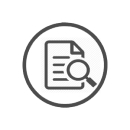2021 Equity Challenge Day 2: Understanding Bias
Because we often think of bias as a function of overt acts of bigotry, we can sometimes remain blind to the invisible structures, systems, and behaviors that bestow and reinforce that power and privilege on a daily basis.”
Lifelong social justice advocateBias is a preference in favor or against a person, group of people, idea or thing that affects our understanding, actions and decisions. Everyone has bias, and often those biases are activated involuntarily and without our awareness or control. In fact, our brains are biologically designed to make sense of the world using these quick judgments. Although bias is automatic, with intentional effort, we can learn to change the way we think and challenge the negative or harmful biases we hold.
TODAY’S CHALLENGE

Read
Read this resource to understand the difference between explicit and implicit bias. (4 minutes)
Learn about these nine tactics you can practice to confront your implicit bias. (10 minutes)

Watch
Watch this short video and learn how implicit bias shapes our thinking. (2 minutes)
Watch this interview between Trevor Noah and Stanford Professor Jennifer L. Eberhardt to understand how bias can be triggered when we face stressful situations and how to slow it down. (13 minutes)

Engage
Learn about your own unconscious bias by taking a Hidden Bias Test developed by psychologists at Harvard, the University of Virginia and the University of Washington. Consider the Implicit Association Tests on race, skin tone or Arab Muslims. (15 minutes)
Reflect And Share:
- How have you experienced bias in your own life? What biases do you hold that you are aware of?
- How might our biases toward others affect how we shape our own lives?
- Did you notice anything about yourself after taking today’s challenge? Consider sharing this new awareness with a colleague, friend, family member, etc. to deepen your understanding.



